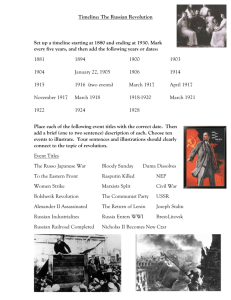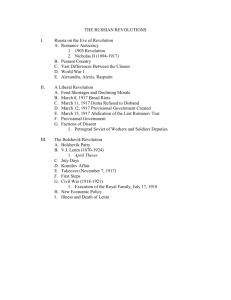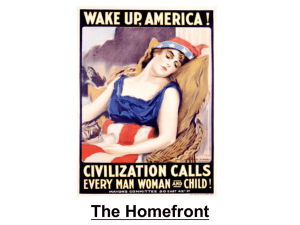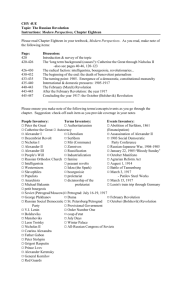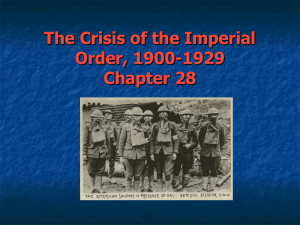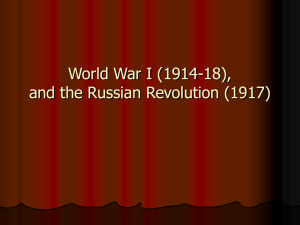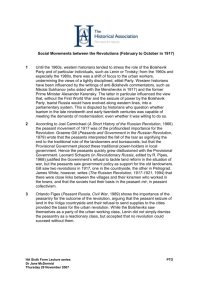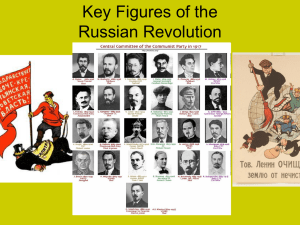Further Particulars - Cambridge Courtauld Russian Art Centre
advertisement
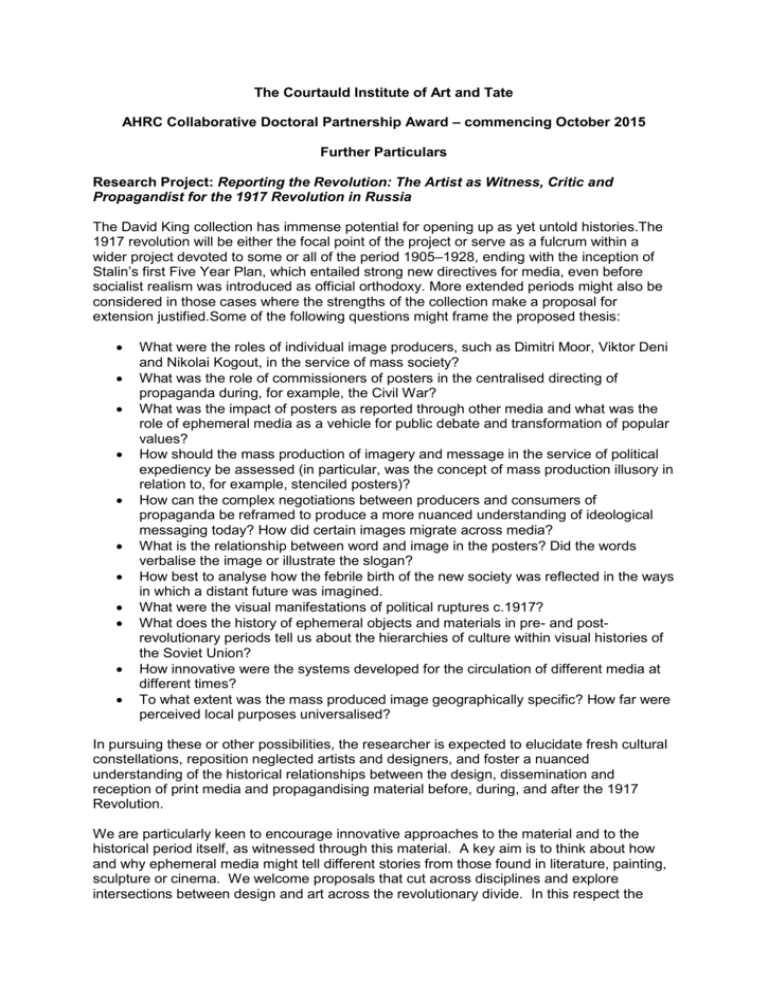
The Courtauld Institute of Art and Tate AHRC Collaborative Doctoral Partnership Award – commencing October 2015 Further Particulars Research Project: Reporting the Revolution: The Artist as Witness, Critic and Propagandist for the 1917 Revolution in Russia The David King collection has immense potential for opening up as yet untold histories.The 1917 revolution will be either the focal point of the project or serve as a fulcrum within a wider project devoted to some or all of the period 1905–1928, ending with the inception of Stalin’s first Five Year Plan, which entailed strong new directives for media, even before socialist realism was introduced as official orthodoxy. More extended periods might also be considered in those cases where the strengths of the collection make a proposal for extension justified.Some of the following questions might frame the proposed thesis: What were the roles of individual image producers, such as Dimitri Moor, Viktor Deni and Nikolai Kogout, in the service of mass society? What was the role of commissioners of posters in the centralised directing of propaganda during, for example, the Civil War? What was the impact of posters as reported through other media and what was the role of ephemeral media as a vehicle for public debate and transformation of popular values? How should the mass production of imagery and message in the service of political expediency be assessed (in particular, was the concept of mass production illusory in relation to, for example, stenciled posters)? How can the complex negotiations between producers and consumers of propaganda be reframed to produce a more nuanced understanding of ideological messaging today? How did certain images migrate across media? What is the relationship between word and image in the posters? Did the words verbalise the image or illustrate the slogan? How best to analyse how the febrile birth of the new society was reflected in the ways in which a distant future was imagined. What were the visual manifestations of political ruptures c.1917? What does the history of ephemeral objects and materials in pre- and postrevolutionary periods tell us about the hierarchies of culture within visual histories of the Soviet Union? How innovative were the systems developed for the circulation of different media at different times? To what extent was the mass produced image geographically specific? How far were perceived local purposes universalised? In pursuing these or other possibilities, the researcher is expected to elucidate fresh cultural constellations, reposition neglected artists and designers, and foster a nuanced understanding of the historical relationships between the design, dissemination and reception of print media and propagandising material before, during, and after the 1917 Revolution. We are particularly keen to encourage innovative approaches to the material and to the historical period itself, as witnessed through this material. A key aim is to think about how and why ephemeral media might tell different stories from those found in literature, painting, sculpture or cinema. We welcome proposals that cut across disciplines and explore intersections between design and art across the revolutionary divide. In this respect the student will be encouraged to take a comparative approach to the material, studying how certain themes running through different parts of the collection are differently inflected in different media and/or time periods and /or by different producers. In addition to working comparatively within the framework of the collection, the student will explore related material in other national collections in London, especially the Russian book collection of the British Library and the White Russian poster collection at the V&A, which provide points of contrast and comparison, as well as materials in Russian and US collections, where relevant. The student will be expected to consider critically the materiality of the documents, and will develop her/his own methodological approach in close consultation with the supervisors. March 2015

